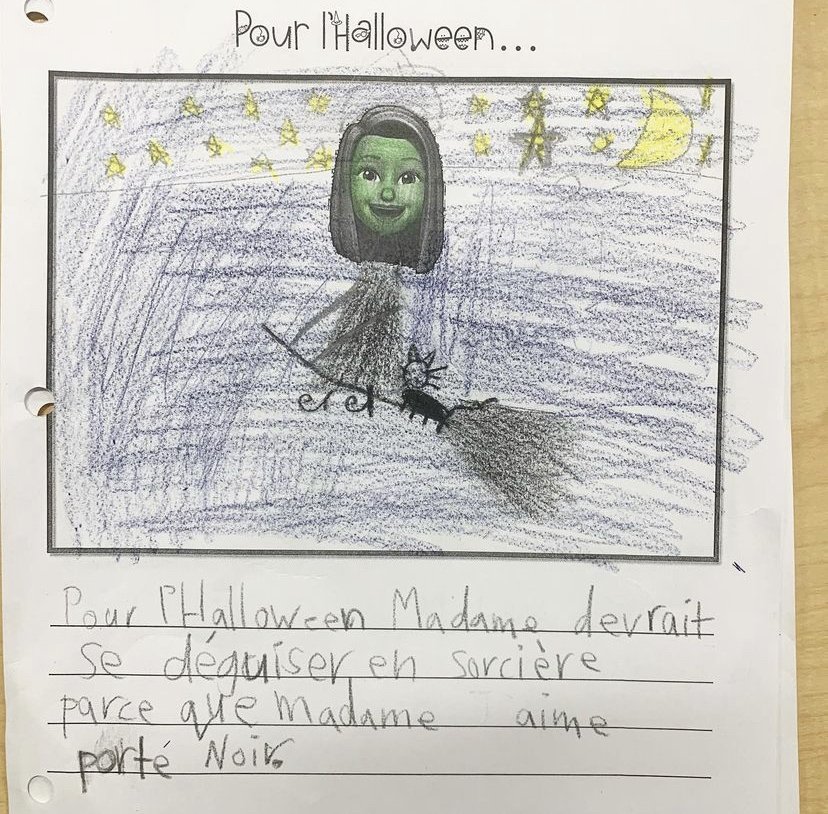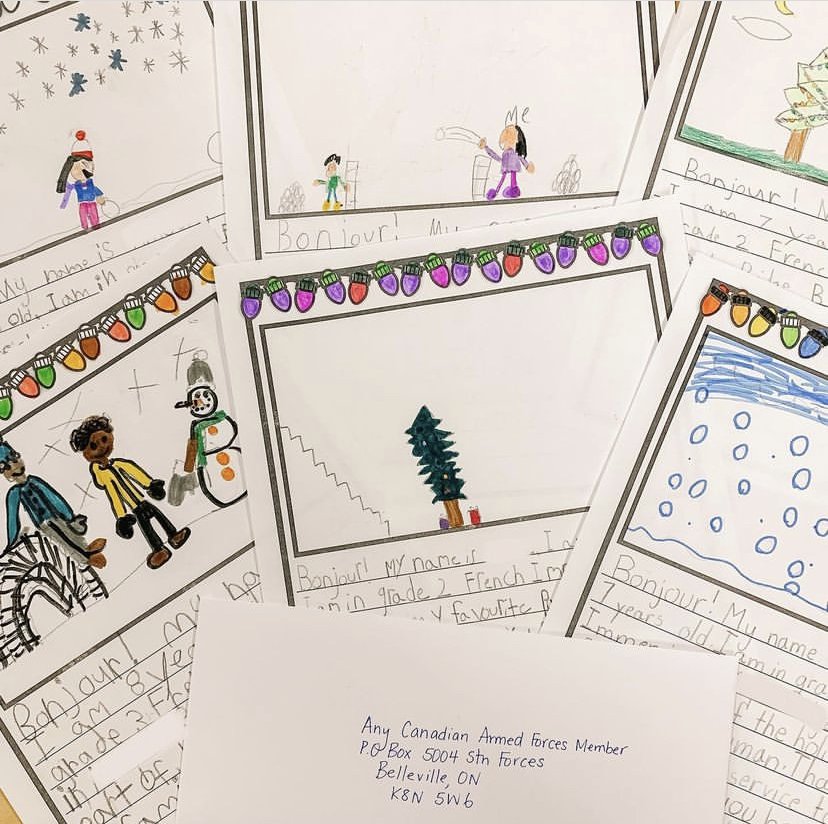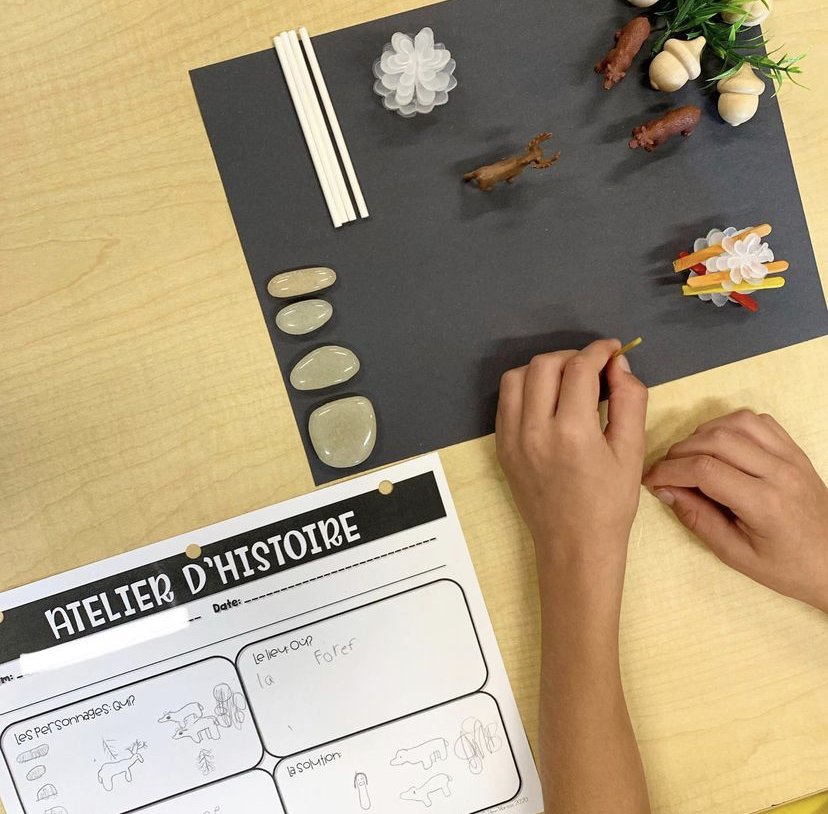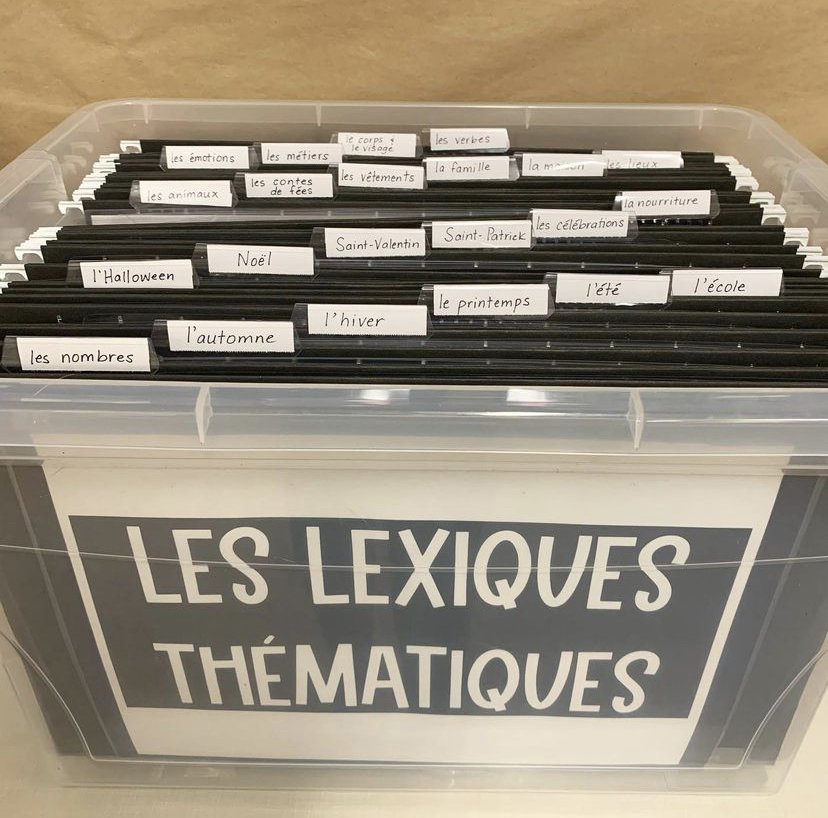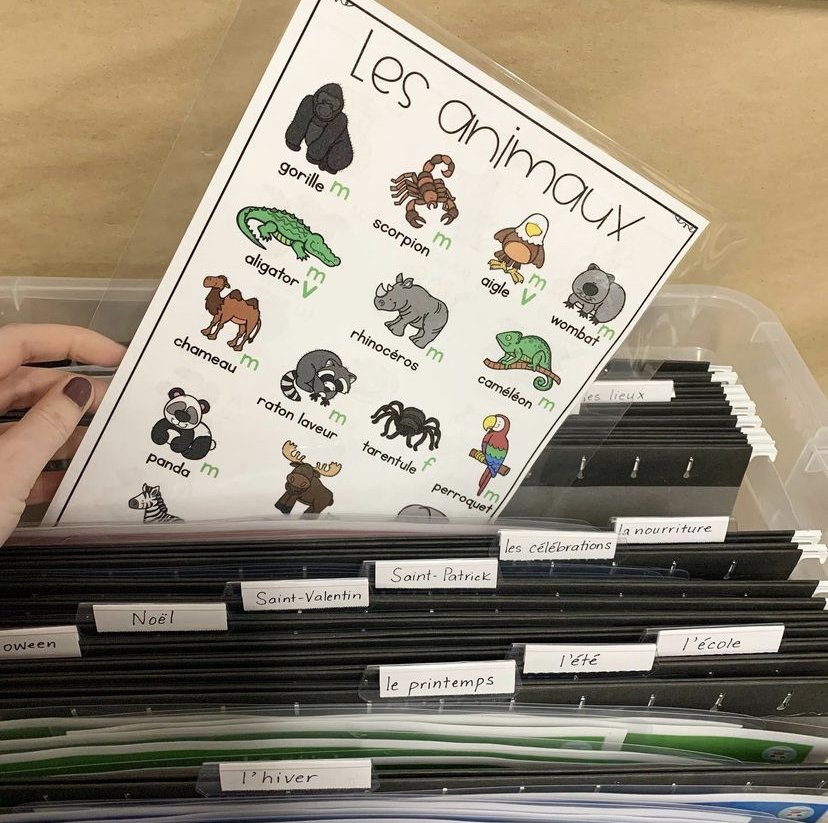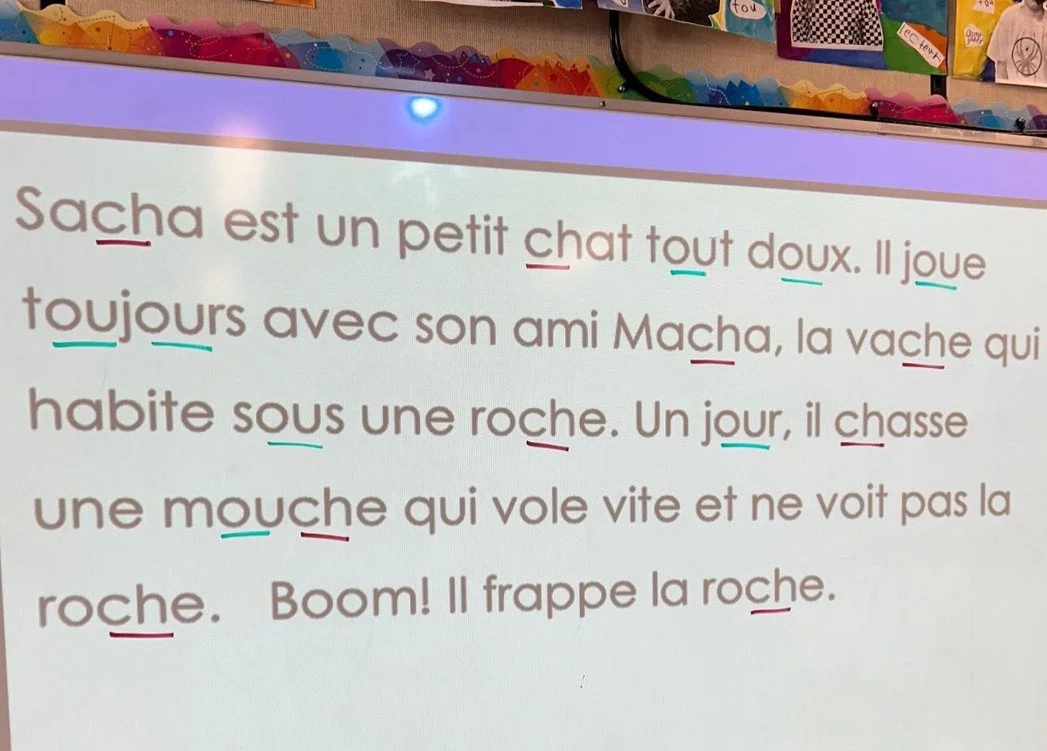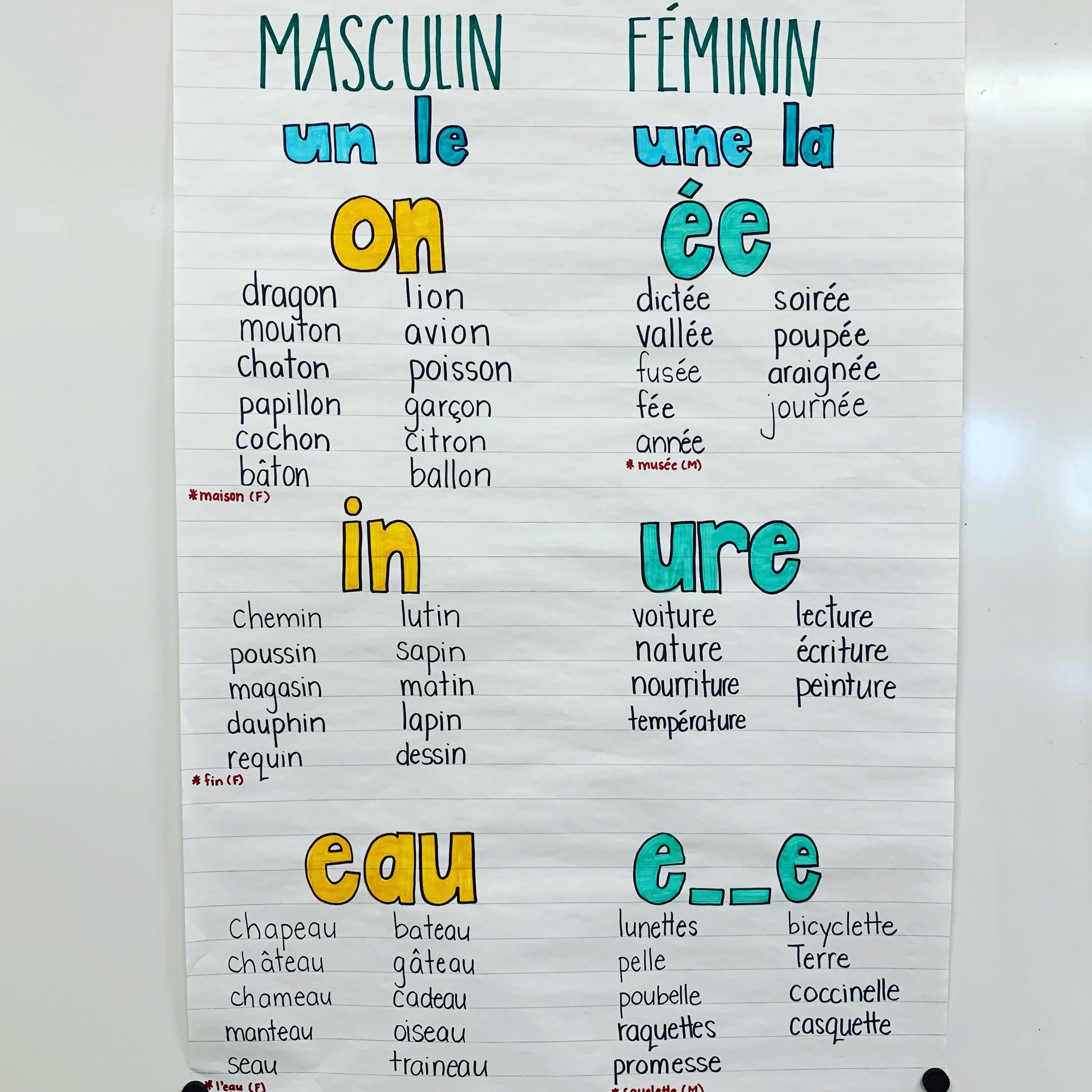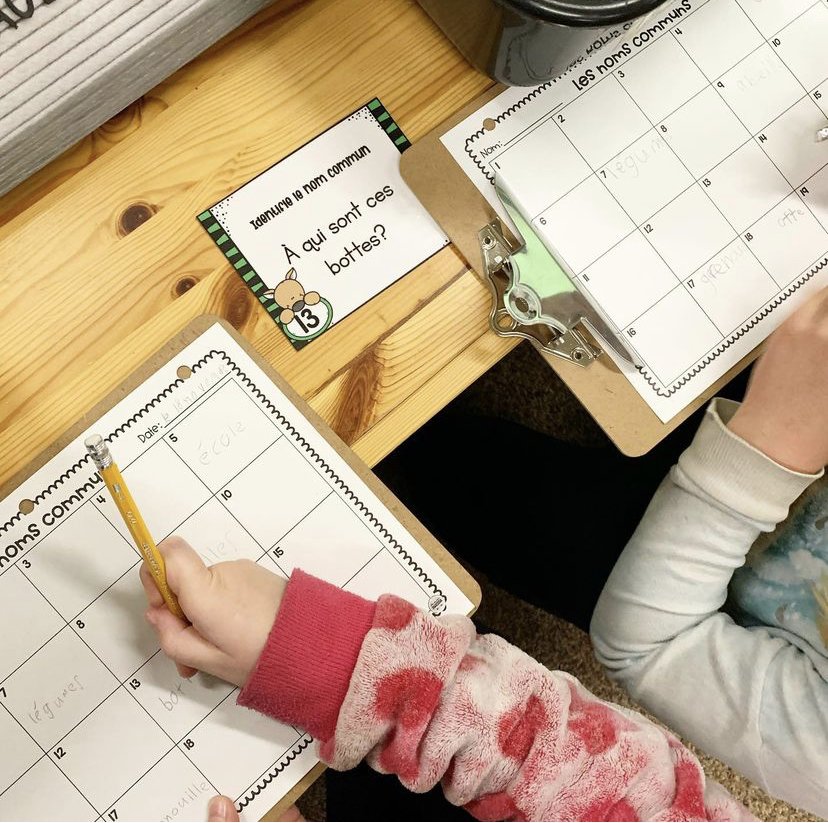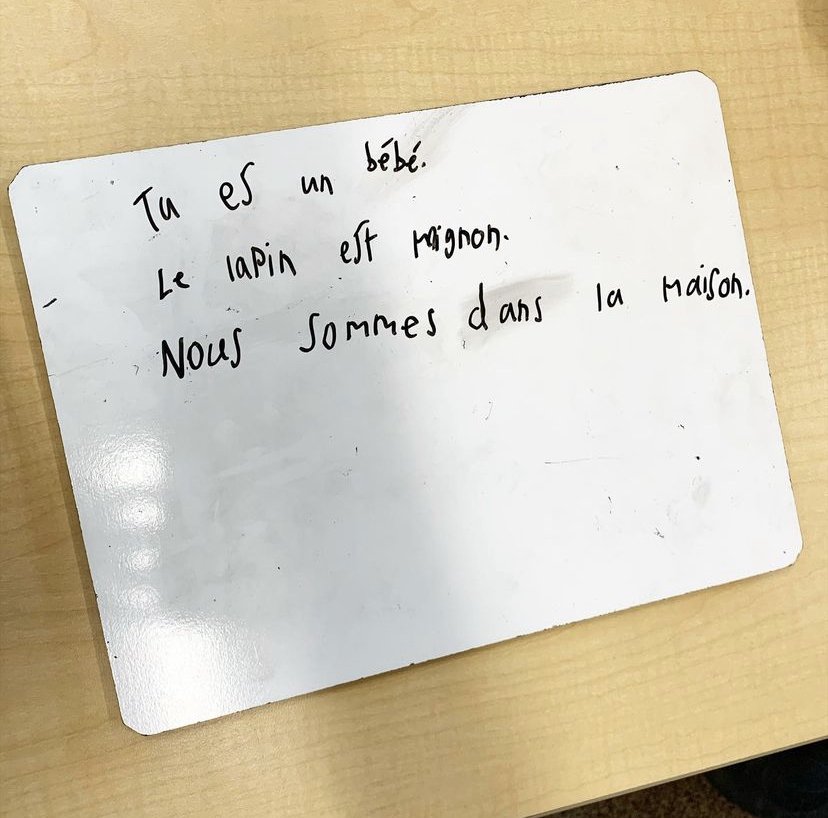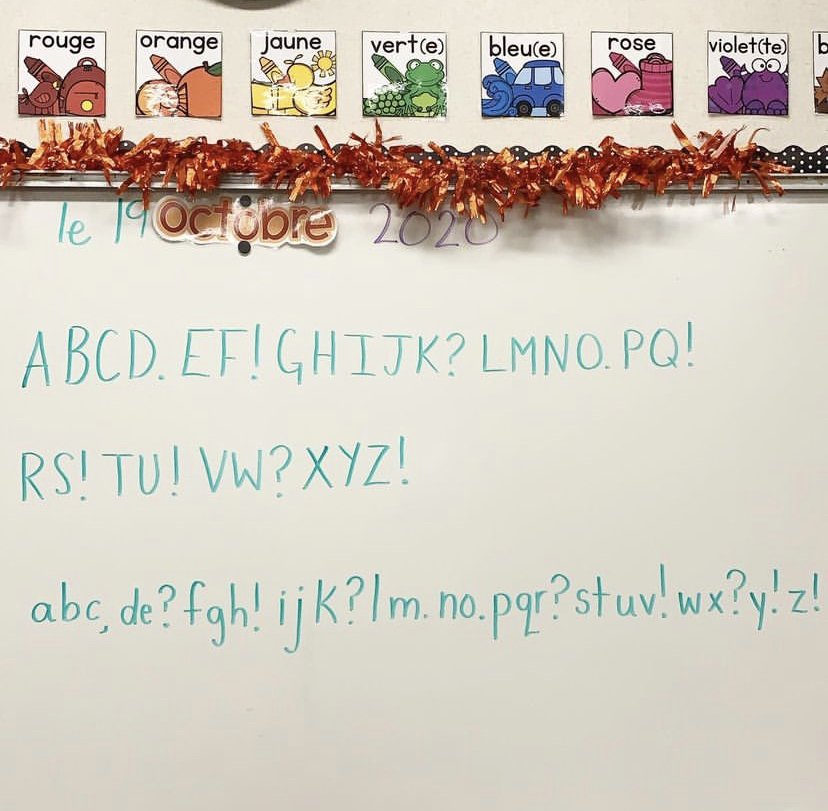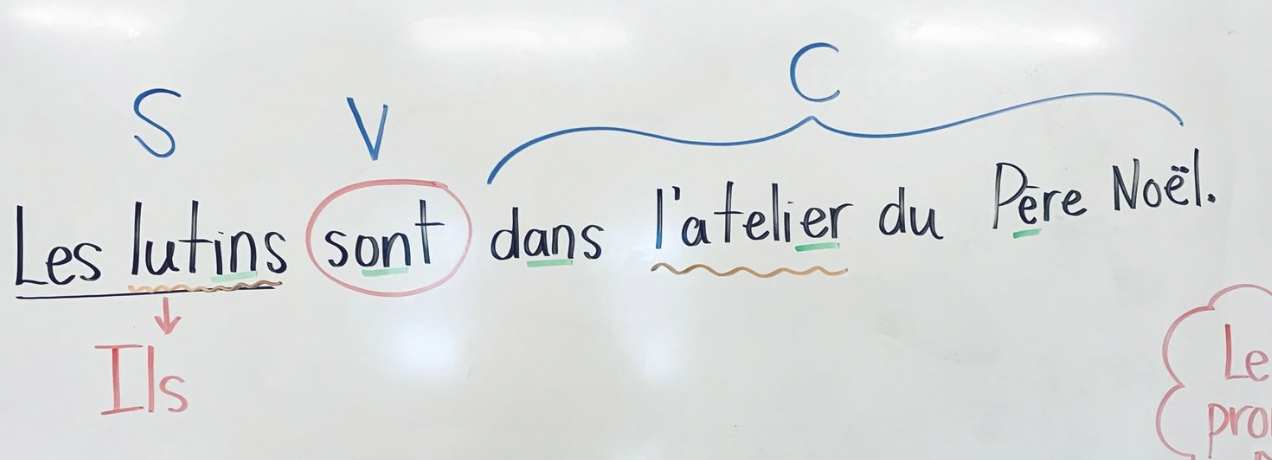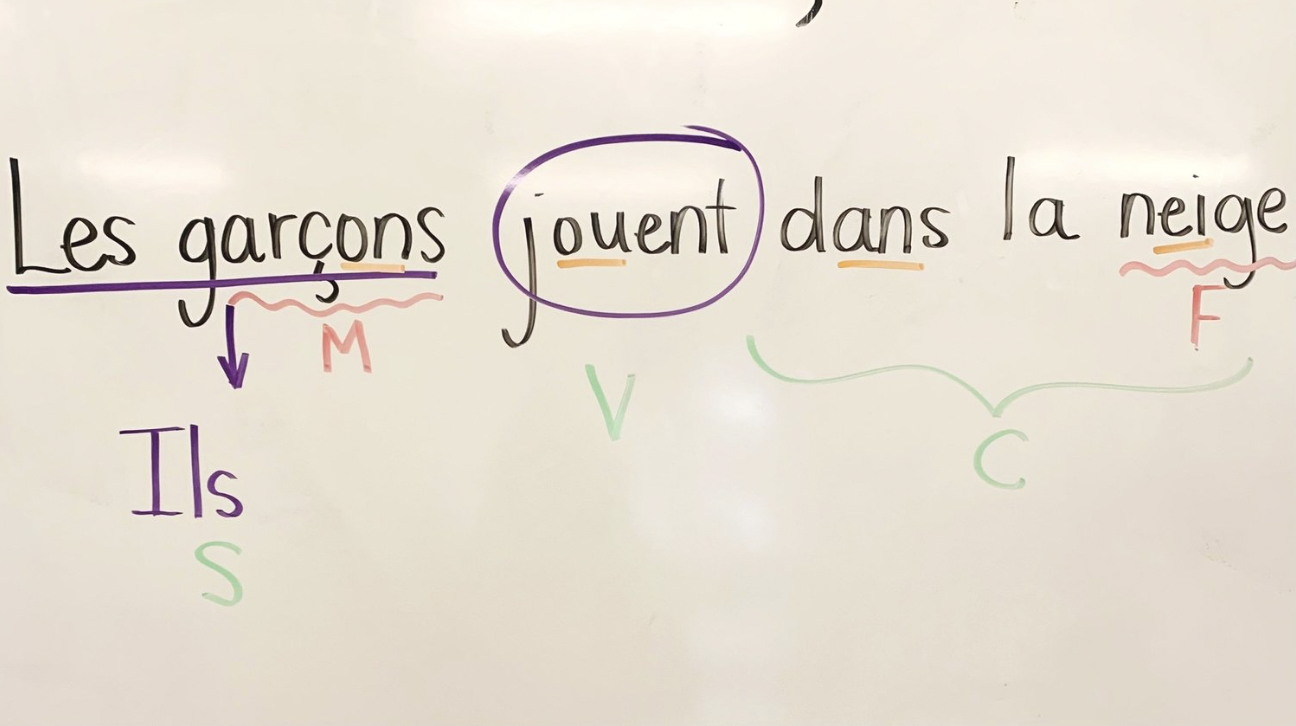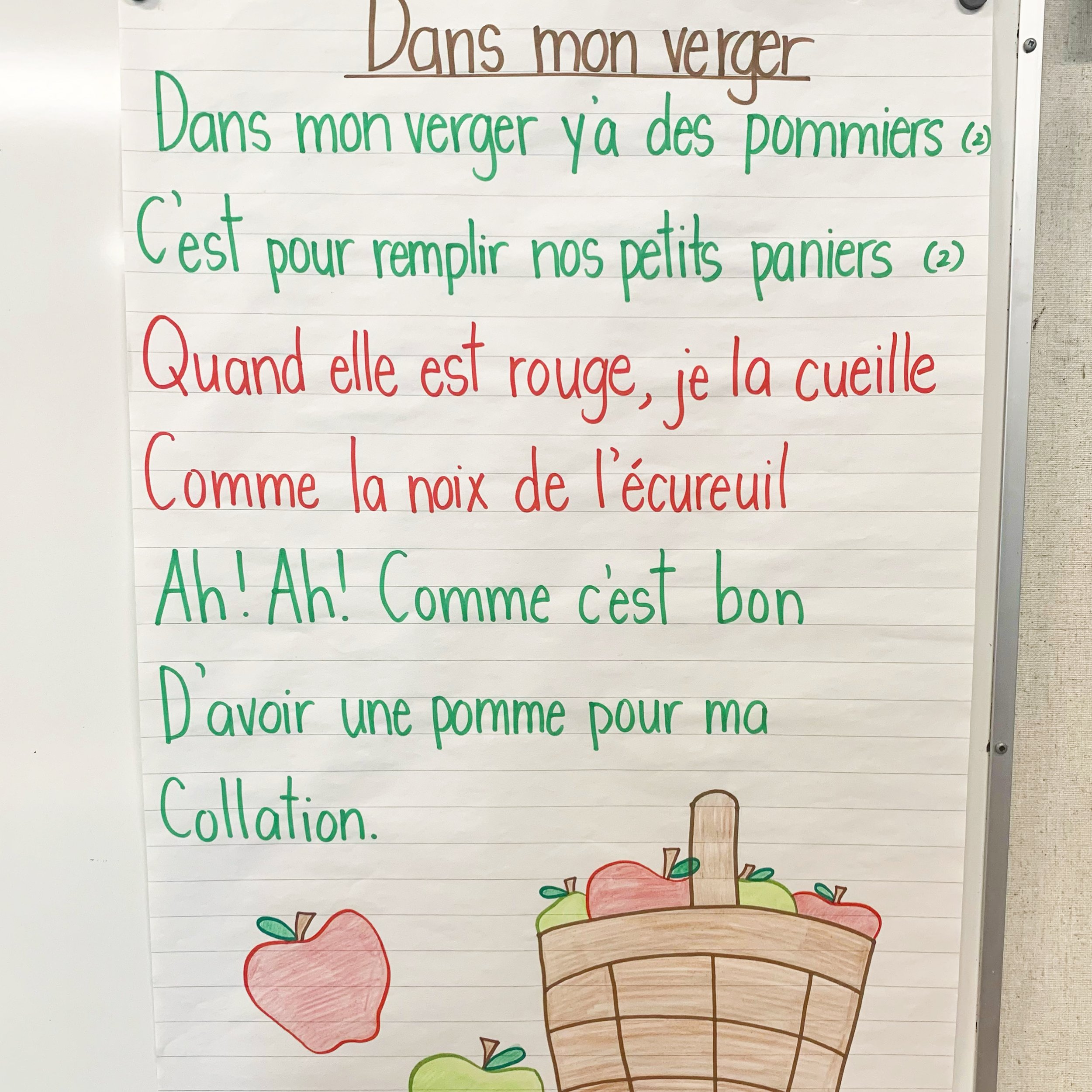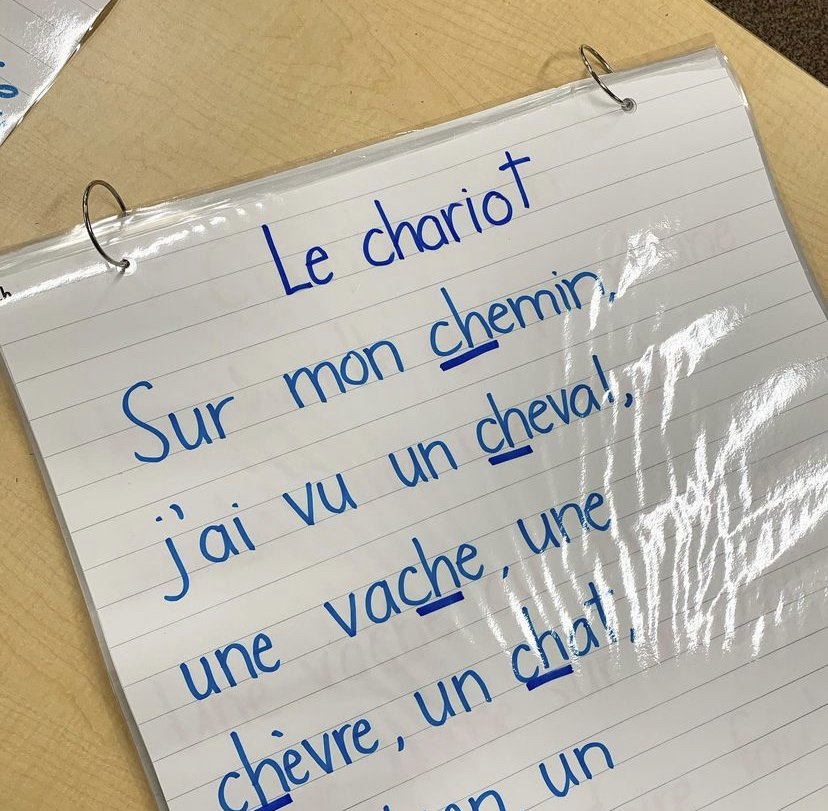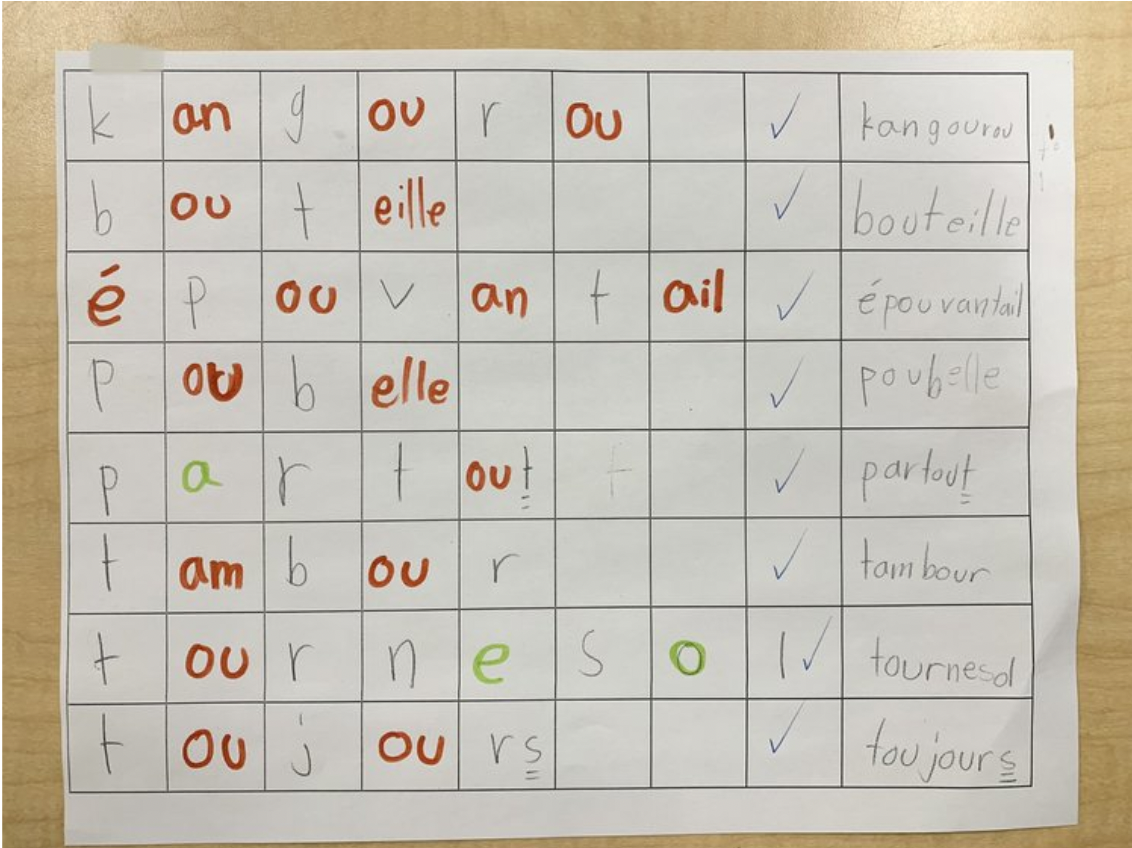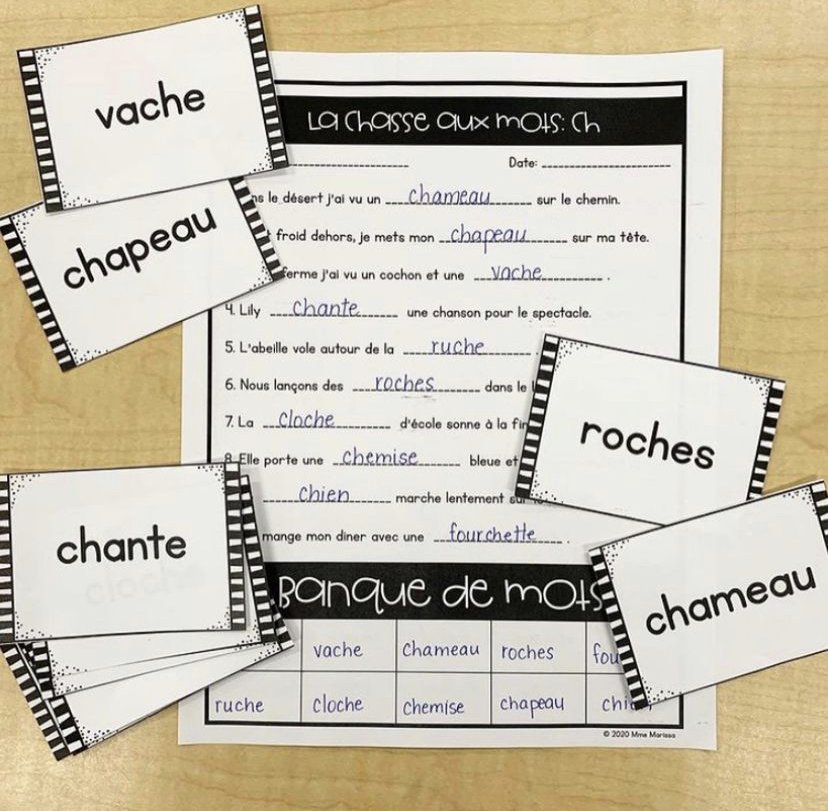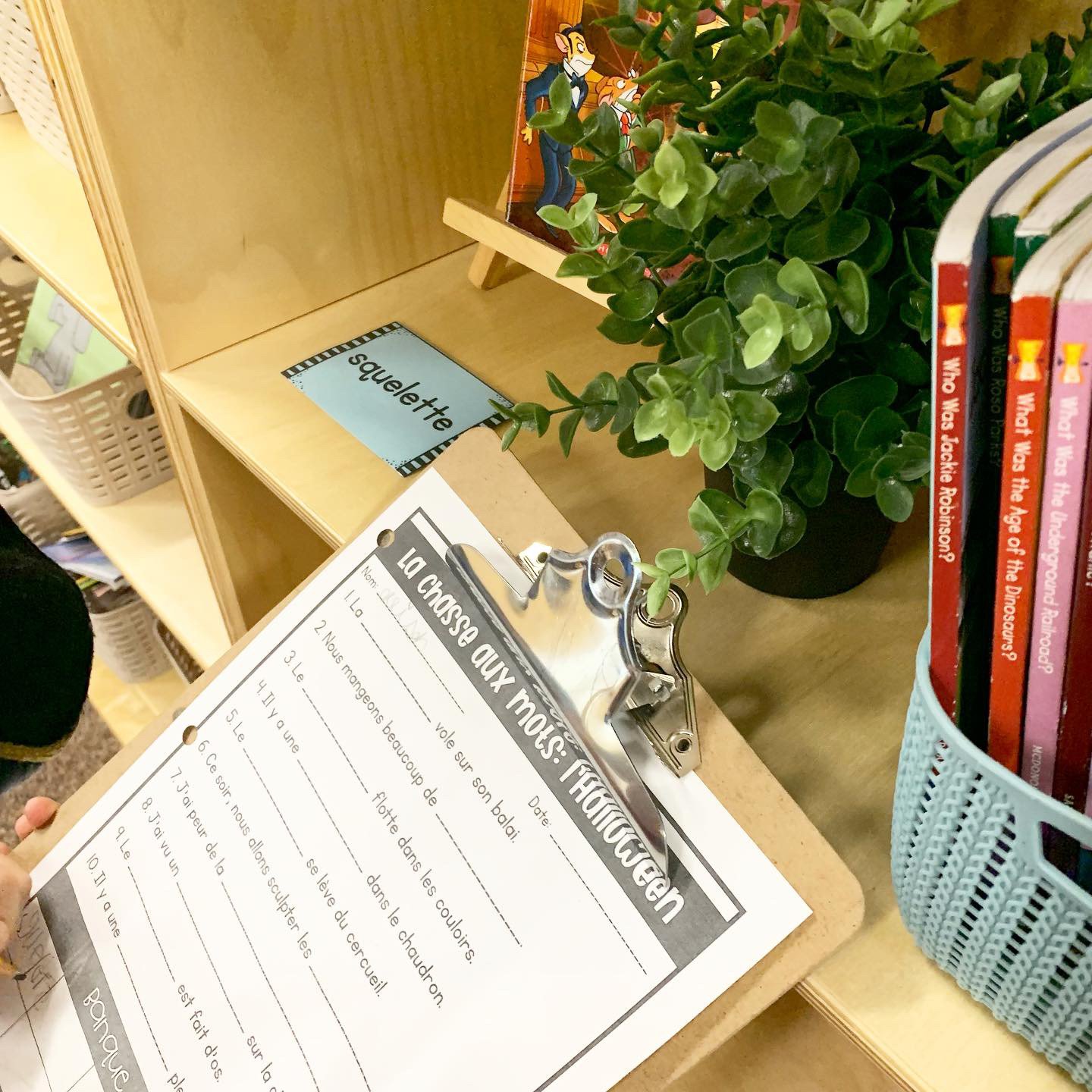My Literacy Program in Grade 2/3 French Immersion
I’m sure that we could all spend the entire day on literacy alone but, we don’t have time for that so I’m here to give you the run down of how I structure all my literacy components.
First off, I’d say I do 90% of literacy in the mornings. We start morning work (which varies), next we come together for the morning meeting which hits on a lot of skills, then writing, then either grammar, vocab or reading. We know that we do literacy all day, but this is targeted time where I teach specific lessons and they have time to practice their skills.
In this blog post I will cover different things I like to do for different parts of literacy. Not every single thing happens every day or even every week. Find the balance and what works for you!
We will cover:
My general weekly schedule
CBE/Son-au-graphe (Structured Literacy Program)
Speaking (AIM program)
Writing
Printing/Cursive
Reading
Grammar
Vocabulary development
Oral comprehension and production (outside of the explicit speaking block)
My weekly schedule
Below is my weekly schedule this year and includes everything, not just literacy. The times are rough, sometimes we get through things faster, sometimes it’s slower or I decide to extend an activity. It’s just a guideline. Also, I know that some schools require you to do literacy at specific times or that your literacy is one continuous block. I get to decide my schedule, apart from my preps.
You’ll notice I have “français” as a block. That’s a flex term for anything français related, mostly it’s when I do speaking, grammar or group reading comprehension/reading skills.
Calgary Board of Education (CBE)/Son-au-graphe Structured Literacy Program
I started using the UFLI program in English with my students and loved the structure.
Each week you work on a phoneme (usually represented by multiple graphemes). We learn the rules for the spelling pattern, we segment and blend words, we write words and sentences and read words and sentences.
It’s a great opportunity for grammar hits in context. Asking them about spelling patterns for masculine or feminine or where we need punctuation. While it’s not necessarily laid out in the lesson, it was easy to add those bits in to review many concepts.
We used these dry erase pouches so that we could reuse the same paper all year.
Their program is available in multiple grades. You can check it out here. Please have a read through the information documents before beginning this program.
NOTE: You may also be interested in Son-au-graphe which is very similar, though has a slightly different structure. You can find it HERE. Go all the way to the bottom of the page.
SPEAKING (AIM program)
Here I am helping a group out during their play performance in another class.
Truth be told, I had never really explicitly taught speaking for the first few years of my career. I mean, we speak all the time and I have always had some speaking activities in my morning routine but…an actual speaking block, not until this year. I went to several pro-d workshops about the AIM Language program created by Wendy Maxwell. I have incorporated a 15 minute speaking block 3-4 times per week. I am blown away at the amount of speaking that’s happening in my class and we are working hard towards a play (as part of the program). This year we only had time for one, we did “Le chat et la lune”.
These aren’t cheap kits, and my district purchased it for us but I am totally sold, and will continue to use it. If you get a chance to attend any sessions about AIM, I would highly recommend it.
WRITING
We do some form of French writing in my class 4-5 days per week. Depending on the activity, my writing blocks are about 20-30 minutes. We work up to this, so earlier in the year there is more lesson/demo before they write. I like to do different writing activities throughout the week.
Below are some examples of different things I like to do. I don’t do all of them every week, I’ve just included them as ideas.
Journal - Open ended which is meant for them to write about anything and everything. I don’t mark this very much, it’s more about getting them to try out vocabulary, work on sentence structure and feel confident in writing. I don’t pick spelling or grammar apart.
Sentence stretching - You can do this as a whole group, have students work in teams or individually. The goal is to keep adding on to the sentence to add more and more detail. Sometimes we do a challenge to see who can make the longest sentence (that still makes sense).
Visual prompt - I have had huge success with offering visual prompts. These were especially helpful for my students who need a boost to get going and struggled with vocabulary. You an also find images online and go through the image together to write down vocab to create your own word bank.
Want to use them in your class? I have over 100 prompts with different themes, seasons and celebrations. Check out the full bundle HERE.
Below is an example of how I run the picture prompt in my class. First, we go over all the words that are in the word bank on the page. Next, we brainstorm other words that could be helpful when writing about this image. We find nouns, verbs and adjectives.
Writing projects - These writing projects are often done for holidays, special events or seasons and are often an extension of another activity (social studies, for example).
These are great as they often include planning, and editing before making a good copy. The planning stage really helps a lot of my students when they get stuck staring at a blank page.
I also have a series of writing projects that guide students in each of the writing activities.
Writing styles - We learn about specific writing styles (opinion, letter, story, procedural) so we go step by step to learn the ins and outs of the text features and how to actually write in that style.
Mme McIntosh has great resources.
Mme Caroline also has great resources for writing styles. Linked is her narrative unit.
Story workshop - I love story workshop because it gives students so much creativity and confidence. They get to build a scene and it helps them to be able to create the story before they actually write about it. Learn more about story workshop.
The thing about writing prompts:
I used to give writing prompts all the time but I found that instead of inspiring my students, it caused them to shut down and produce very little. While a prompt can help some students get the ball going, many find it very limiting. This is not to say that I never give them parameters or prompts, of course I do, and I need to sometimes when we’re doing a writing project or learning about a specific type of writing but I like to give them options. For example, if we’re learning about procedural writing, maybe I ask them to write a procedure for making a type of food. It could be a pizza, a hamburger, a peanut butter sandwich…so we’re all in the same mindset here, but they have choice.
Vocab struggles:
Vocabulary is one of the greatest challenges when teaching writing in a second language. I like to offer them as much help with this as I can so that they can show me their writing skills, and not flop because they can’t get their words out.
Firstly, I will gladly translate a word or two for a student. They know that I don’t translate whole sentences for them, but I can give them a word or help with a short phrase that might not be so obvious.
I also offer tons of lexiques for writing. I have a combination from Mme Andrea (called Banque de mots on TPT) and For French Immersion (from her blog).
PRINTING & CURSIVE
Each morning, students complete a few lines of either printing (grade 2) or cursive (grade 3) in their notebooks. This works on formation and appropriate sizing as the lines are similar to notebook lines. We start with letters only, then do words after.
NOTE: Cursive is NOT currently in our curriculum but I teach it anyways as I believe it’s an important skills (even though we don’t write essays in it anymore) and so many of my students see success as its continuous and not stop/start like printing. Some of my grade 2s always want to hop on board and give it a try too!
READING
Individual reading
Listen, if you do guided reading or reading groups…AMAZING, but it doesn’t for me.
I do individual reading with every student. If you’re thinking wow, that sounds like a lot, you’d be right. But I feel it’s a more effective use of my time and better targets my students.
If you want to learn more, you can read about how I structure my individual reading.
NOTE: Because of the individual reading, I don’t have it scheduled reading groups in my day plan because it happens constantly.
Group reading:
I do like to practice reading comprehension with my whole group. I have students take turns reading out one sentence as we go through the text. Then we read the questions and try to find the answers in the text. We may also do things like text recall, making predictions, summarizing or story sequencing.
When we do, we sometimes underline key information to help us write a complete answer. We will also do things like reading a short passage and drawing what it’s about.
BELOW:
CBE reading decodable passage where we found sounds we’d been working on
Lancer et lire activity (from Son-au-graphe)
Novel study
Mercy Watson is one of my favourite early chapter books. We do this towards the end of the year when students have developped their skills a bit. I like it because the words aren’t that challenging and there are lots of illustrations but it feels more “grown up” because it’s longer.
I project my copy under the doc cam and students volunteer to read aloud. This is volunteer ONLY. I am well aware that not everyone can read at that level, but everyone can still enjoy the story, even if they don’t have the skills or confidence to read in front of others yet.
Read alouds
When I do read alouds, I also use this time to focus on reading skills. I ask them to make predictions, answer questions, ask them what they notice in the images…
GRAMMAR
I explicitly teach grammar a couple days per week and we do little grammar hits daily. Why do I spend time on this? Well, because a good understanding of grammar helps students with their reading, writing and oral production. French grammar is also different than English grammar so it’s important to me to spend time on this. I’ve found that spending time explicitly teaching grammar has improved the overall confidence of my students. Let’s face it though, grammar isn’t a favourite topic of many, so we only spend 15-20 minutes on this. On my schedule it would be a “français” block.
I mainly use two things to teach grammar. First, I use my Phrase du Jour which is part of my morning routine. This is meant to be daily, quick and reinforce skills in context. Secondly I use my French Grammar Units. In all honesty, my first year teaching these grades was a train wreck. I had no idea what I was doing and threw in random bits of grammar without any real flow or structure. Now, I have a structure that flows from one unit to the next and students learn what to expect. We learn through a lesson, examples, writing activities, worksheet activities, digital games, write the room etc. so that students are able to work on the skill in multiple ways.
Want to learn more about my grammar program?
And no…I don’t teach all those units in 1 year. I focus on the gaps and leave some of the higher units for my grade 4 colleagues to cover.
VOCABULARY BUILDING & WORD WORK
Songs & Poems
As part of our morning routine we do songs and poems. I usually like to teach 2-3 songs and 3-4 poems per month. The poems are from so many different resources and I have thematic ones and sound based ones. Here is my list of songs I use throughout the year.
Sound check-in & orthographic mapping
Instead of a traditional dictée, I do something called “sound quiz” on Fridays which is really more of a progress tracking check-in than a true quiz. I don’t give them a list of words to memorize. Instead, they’re words that we’ve used all week during our target sound activities. Then, I choose some and see if students are able to apply what they’ve learned.
We develop vocabulary and we practice these words of the week in many ways including putting them in alphabetical order, writing sentences with them and even doing orthographic mapping. You can read more about how orthographic mapping in French Immersion here.
Looking for more mapping activities? These “map the room” are a fun way to get moving while also practicing breaking down words!
Hide the cards around the room, then students will go looking for them and map the word that they find.
This could be done in a write the room style, centre, small group or whole group. An easy activity to leave for a sub!
Les animaux, les saisons, les fêtes, les thèmes. Available individually or in the bundle.
Vocab in context - draw the sentence
We do this each week and it features words that we have been learning about (all with our target sound).
Students must read the sentence, underline or circle the target sound and draw a picture to show their understanding.
Vocab in context - la chasse aux mots
My students LOVE this activity. Basically I made a more advanced version of write the room where students hunt for the 10 words hidden around the room, write them in their word bank and then write them in the correct sentence using their knowledge of vocabulary and comprehension skills.
It gets them up and moving and feels like a game! Sneaky word practice!
Read alouds
Read stories to your students! They learn so much from stories and they have the aid of the pictures or illustrations to help with their understanding. It’s also important that they hear YOU read as that will help them with their oral abilities. Here’s a list of some favourite primary series.
Thematic word work
The trouble with teaching a 2/3 split (at least in many parts of BC), is that grade 3 students get English instruction while the grade 2s do not. What do I have my grade 2 students do while I was busy with the grade 3s? They work on some thematic vocab in their independent activities booklet. These are also great early finisher activities.
Vocab games
One of my favourite easy games is Mot pour mot. So easy to prep and set up. It’s great for a few minutes before lunch and it has them working as a team to try to come up with words. They get super compettiive! Read the full description HERE.
Other examples:
- Scattergories
- Headbands with thematic vocab
- Je vais faire un pique-nique et j’apporte…
- Telephone
- Bingo
ORAL COMPREHENSION & PRODUCTION
Let’s face it, oral comprehension happens all day, every day. Sometimes I will do explicit things like listen to me read sentences and they have to draw what I say.
Other than the explicit speaking program I mentioned earlier, here are a few more activities that can help with their oral skills.
Word of the day
Each day during our morning routine, I give a word (ie: ballon) and students need to say any sentence that contains that word. It can be le ballon, les ballons, un ballon…it doesn’t matter as long as they make a sentence with it.
Find the difference
You can find plenty of these find the difference videos on YouTube. Students have to share what they notice orally.
Image prompts
Display an image of anything, a scene, an animal, a meal…and students need to describe what they see orally.
Oral presentations
We do a scientist of the week every week from January to June. Students are expected to demonstrate their experiment and explain what they’re doing in French. They have support from their poster and me, it’s not a long and memorized presentation at all!
Some teachers might have students present about themselves, do an oral book report or recommendation or present an animal, holiday or province that they did a research project about.
Reading aloud
While this is not original oral production, it’s still a skill to be able to read out loud. We do this a lot during group readings, poems etc.
French shows
Sometimes I’ll let them watch something while they eat their lunch. They love Toupie et Binou, Théo le loup and Monsieur Steve (all on YouTube).
Tongue twisters (les virelangues)
Comment te sens-tu?
Great for talking about feelings vocab or sharing about their day. Get all the slides FREE.













